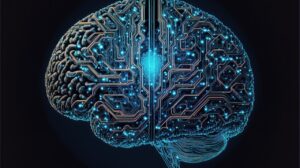The way in which businesses, enterprises, industry leaders and consumers utilize technology for everyday tasks is set to undergo one of the most drastic evolutions ever. Just a few short years ago it was nearly impossible to think any sort of technology could have a greater impact than networked computers, the Internet or even mobile computing, but now technologies like artificial intelligence (AI), Internet of Things (IoT) and Augmented Reality/Virtual Reality (AR/VR) are being hyped more than ever.
Case in point, this year’s Consumer Electronics Show provided a glimpse at whiz-bang technology and gadgets, as well as what might be the first in a whole new generation of premium VR headsets from some big brands as well as upstarts.
However, what everyone and all industries continue to fail to take into account is that none of this technology means anything unless the platforms they run on is ready to take off. Because of this, 2023 shouldn’t be viewed as the year of hardware and gadgets, but instead it’s the year of the platform for these technologies.
What Is Meant by Platform?
Look at it this way, imagine if you took today’s latest iPhone and ran it on the operating system from 2009. Even though the hardware is amazing, its performance would virtually make the user experience meaningless. The same has been the case for AI, and much of the immersive mixed reality technologies that comprise AR/VR.
Enterprise-grade high-quality AR/VR platforms require both performance and scale. However, existing systems such as MS HoloLens and others are severely limited in both aspects. Most enterprises have a rich repository of existing complex 3D CAD/CAM models created over the years, which is a critical part of the digital thread being laid out. These 3D models may vary in their complexity (such as poly count, hierarchy, details, etc.), making it difficult to run on standalone devices, restricted by device limitations. This forces developers to decimate and optimized the models to work on limited resources available on these devices, breaking the digital thread.
Businesses need to know that as these virtual environments become richer and larger, the problem of scalability continues to compound. This cycle is repeated for each of the different hardware platforms, making it difficult for any enterprise to move from experiments and pilots to full-scale deployable solutions, thus stunting the speed of innovation and effectiveness.
The device limitations also severely restrict the capability of existing AR/VR systems to generate and work within most cloud environments, which is essential to collocate and precisely fuse the virtual objects on top of physical objects in the real world with complex surfaces, and varied lighting and environment.
Businesses in 2023 are finally overcoming this significant challenge by leveraging AR/VR platforms that are based on distributed cloud architecture and 3D vision-based AI. Up until 2023 many of these platforms were not cloud-based and relied on datacenter technology on premise – which for years had slowed the process and compute capacity to a point in which the user experience was not ideal for today’s requirements. However, in 2023 these cloud-based platforms now provide the desired performance and scalability to drive innovation in the industry at speed and scale.
Businesses today are experiencing the next wave of technology innovation that will fundamentally alter the way they operate. This transformation is primarily driven by merging of the digital and physical world to create a better, smarter and more efficient way of operating. Immersive technologies such as AR/VR are playing a pivotal role in this transformation. The organizations that take a leadership role will be the ones that not only leverage these technologies, but they will partner with the right technology provider to help scale appropriately without having to stunt technological growth.
Cloud Platforms Enable “Digital Twins”
It is this sort of platform that is finally enabling today’s IT leaders to build the Metaverse – knowledge workers and things being represented by “digital twins” – a virtual world where people, consumers, workers all gather to communicate, collaborate, and share through a virtual presence on any device. This means companies will build immersive virtual spaces, aka metaverses, and it will allow employees to virtually collaborate using their digital twin through chats, emails, video calls and even face-to-face meetings.
Well-known companies like Microsoft, Accenture, and Facebook, which itself is now called Meta, are all paving the way toward this new reality of business with their headsets and hardware, but none of it can truly excel and perform without the right platform working behind the scenes building immersive reality, modeling and simulation technologies that will ultimately power this new metaverse and virtual environments for business and enterprise use.
In 2023, platforms will finally breathe life into these technologies based on the following specifications, all made possible by their cloud-based environments as the engine:
1. Virtual Reality Space Convergence
- Ultra-low Latency High Fidelity Rendering: Low latency is extremely critical to provide an immersive experience in virtual environments. AR/VR partners provide unparalleled realism of environments by leveraging ultra-low latency remote rendering on cloud/on premise in full fidelity and wirelessly streaming the solution to affordable commercial-off-the-shelf (COTS) devices – HMD, Tablet and Desktop.
- High Precision 3D Artificial Intelligence (AI) based Spatial Mapping: Uses high-fidelity remote spatial mapping with high fidelity 3D scene reconstruction, scene segmentation and 3D object recognition using 3D vision and deep learning-based AI with precise fusion of the real and virtual worlds to merge real world and virtual worlds.
2. Communications and Computing Infrastructure
- Cloud computing/edge computing: Industrial enterprises will subscribe to multi-cloud, edge cloud. Depending on different factors like data sensitivity, latency, cost, different parts of the environment need to be run at different clouds/edge in a distributed manner.
- Messaging framework: In the distributed Metaverse there is a need to update the Metaverse at global scale so users can collaborate seamlessly. AR/VR partners have messaging framework updates distributed to the Metaverse at global scale.
3. Fundamental Common Technology
- Security and privacy: Security and privacy is one of the biggest issues facing today’s world. Since digital twins are an integral part, these environments will have much richer data. The security and privacy in virtual environments cannot be solved by traditional security tools. AR/VR partners have built tools that handle security and privacy related to digital twins.
Technologies like AI, IoT and AR/VR have been hyped for years. But 2023 is the year of the cloud-based platform that finally enables each of these technologies to power business and consumer applications.





